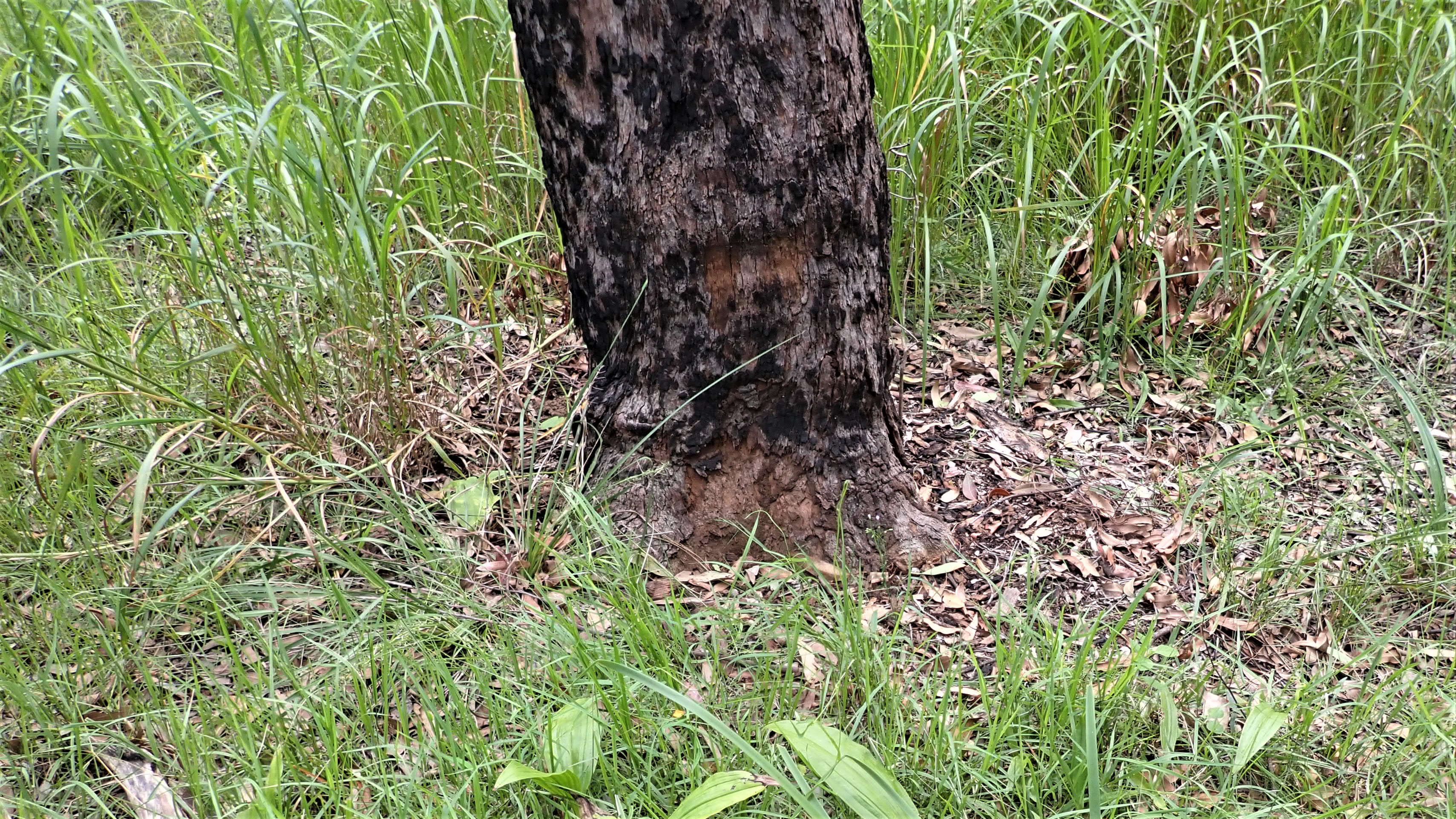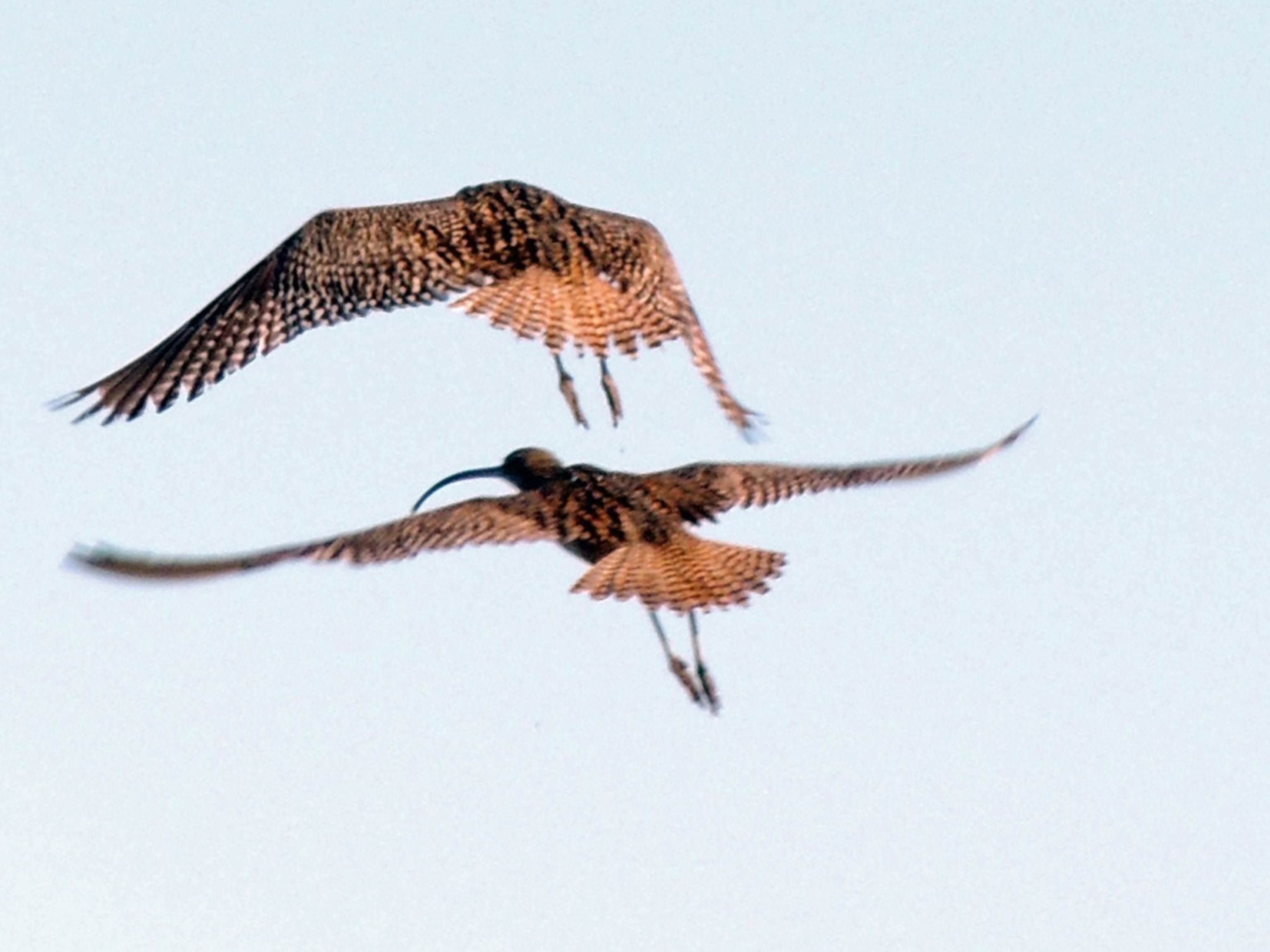The intertidal flats of Moreton Bay
Introduction
Along the sheltered shores of Moreton Bay, you will find a coastal ecosystem made up of a mosaic of saltmarsh, mangroves, seagrass and intertidal flats. Mangroves, saltmarsh and seagrasses are conspicuous by their vegetation and colour. On the other hand, the intertidal flats are devoid of vegetative structure, but don’t be fooled, they are a productive part of our bay.
On the landward or western side of the bay, the intertidal flats are characterised by soft mud (fine sediment) particularly where the wave action is low whereas sandflats, which contain coarse-grained sediments and are far more common on the islands of the eastern side of Moreton Bay. Depending on the landform and exposure to wave and currents you will often see local variations of sediment from fine mud areas to banks of sand flats. The soft sediment is loaded with invertebrates including molluscs, worms and crustaceans.
 A selection of mollusc (gastropod) invertebrates located in the intertidal fla...
A selection of mollusc (gastropod) invertebrates located in the intertidal fla...
Mangroves as nurseries for fish and crustaceans
Introduction
Coastal wetlands and in particular mangrove forests are known as nursery sites for species including commercially important fish and crustaceans. The turbid water along with the structure of the mangrove root system provides shelter from predators and food for many juveniles. But what happens when the tide goes out?
At first glance, mangrove forests don't appear as suitable habitat for juvenile fish
Impact of tidal flow
Many species, move out onto the tidal flats and water channels with the outgoing tide. Out in the open, they are vulnerable to predation from specialist hunters including raptors and kingfishers as well as predatory fish including flathead and adult bream. However, some fish and crustaceans are able to stay in the mangrove forest in the small pools of water left by the receding tide.

The receding tide leaves pools and rivulets suitable for fish to shelter during low tides
Generally in the shade, these tidal pools provide the food and shelter for...
An ancient tree dwells in Hays Inlet
Background
The dedicated staff of the Moreton Bay Regional Council are passionate about our wildlife areas, and I was recently invited to attend a pre-planning session for an area of reserve adjacent at Hays Inlet. The planning process looks at a procedure of developing a fire management plan to prevent hot destructive fires and maintain biodiversity using methods such as mosaic burning. Refer blog entry Mosaic burning (enviroed.com.au)
The first impression to the observer is the actual size and range of the area. It reminded us that there is still a large region of potential conservation land adjacent to the wetlands of Hays Inlet and the Peninsula. An intense bushfire passed through the area in 2014 and you could still see signs of the damage on several trees. However, there was also signs of recovery with a number of new trees germinating after the fire and in the process of reaching the mid canopy.

You can still see evidence from the 2014 bushfire
Much of the site was a dry ...
A blue jewel of our rainforest creeks: The Lamington Crayfish
Introduction
The mountains of South East Queensland and Northern New South Wales have significant areas of sub-tropical rainforest. Associated with these mountains are numerous freshwater streams. After rain, these streams can become fast flowing. When these streams make their way through the rainforest, especially where there is good riparian cover to provide shade and leaf litter, you may come across a remarkable vivid blue and white crayfish.
The Lamington Crayfish (Euastacus sulcatus) is a large crayfish with adults usually around 100 – 200 mm in length. These crayfish are slow growing, generally only moulting once a year, and have a life span between 20 and 40 years, although recent literature has postured they may live even longer1.
They are well adapted to the fast flowing waters where the water temperature ranges from 10 to 20 degrees Celsius2. Adults tend to disappear from the stream systems during the colder winter months but reappear in spring in time for the breeding ...
The Eastern Curlew: A wonder of Moreton Bay
The Eastern Curlew is a critically endangered wader. It is the largest migratory wading bird in the world and can be more than 60cm in height and is distinguished by having a large or elongated curved beak.
Like many migratory wading birds, it is listed as critically endangered by the Federal Government. In Australia, this species has declined by over 80% in the last three generations. The decline in numbers has been put down to habitat loss and a general decline in wetland habitats across Australia and East Asia.
Around August, each year, these amazing birds make a round trip from Siberia and Northern Alaska to Moreton Bay and the eastern coast of Australia for the summer months. The birds use the Yellow Sea as a halfway point for important rest and recovery area during their long. They can be observed foraging and feeding on molluscs and small crabs within the sheltered intertidal flats and exposed seagrass beds of Moreton Bay where they can use their large bills to extract their...
The Dawn Chorus: Urban Style
Sometimes underappreciated, the urban environment can provide habitat for wildlife. Gardens and parks and even nature strips offer food and shelter through native plants and trees as well as palms and even urban infrastructure. This short video provides a glimpse of a “dawn chorus” in the urban environment.
You may have heard of the dawn chorus where scores of wild birds announce their presence through song just before and after sunrise. Even in urban areas we get examples of this behaviour where birds reinforce their territories and bonds with their mates.

The players (L - R) Little Wattlebird, Rainbow Lorikeet, Little Corella
The first visitors to the garden are a pair of Little Wattlebirds with the male announcing his presence with his distinctive call. Within minutes the pair are joined by Rainbow Lorikeets who watch on and join in with their own twittering.
Recent summer rains have seen a proliferation of seed providing fodder for Little Corellas. Unlike most other birds, ...
Richmond Birdwing: A special butterfly
Scientific name: Ornithoptera richmondia
When we think of conservation and icon species we almost always think of charismatic mammals such as koalas, blue whales and quolls. Very few invertebrates draw the same attention, except in the case of the Richmond Birdwing, a species of swallowtail butterfly.
Once a widespread species, for decades it's population and distribution has been shrinking. It feeds on nectar, like many butterflies, and has a special relationship with one species of vine Pararistolochia praevenos, which grows in lowland subtropical rainforest. The Birdwing's larvae are specialised and dependent on this vine's leaves for nutrition. Unfortunately the vine has been decimated through the destruction of lowland rainforest due to urban development, inappropriate fire regimes, weed invasion and farming. Consequently, viable Birdwing populations no longer exist in the greater Brisbane region.
Fortunately there has been significant work carried out by scientists and governm...
Rainforest: A climate control system
Rainforests have been named well, for they are associated with higher levels of rain than surrounding areas. The distribution of rainforests has been associated with geography (e.g. mountain ranges) and prevailing winds. But it's more than this.
In recent times, it has been discovered that these forests actually create their own rain. Many broad-leafed green plants expire water though transpiration, but they also have the capacity to emit aerobacter (bacteria) into the air.

Diagram One: Rainforest foliage emits aerobacter as well as water vapour through transpiration
These bacteria form nuclei for the formation of raindrops, effectively cloud seeding. Research has shown that, rainforest vegetation is an extremely efficient emitter releasing these particles high above the canopy.
Combined with the water vapour from transpiration and the creation of aerobacter, the rainforest creates its own cloud cover, sheltering it directly from prolonged periods of sunlight and even reflecting ...
Fungi: The other "Matrix!"
The other "Matrix"
Many of us may be unaware of a vast network of threadlike mycelia, which connect species, landscapes and ecosystems. This network of threads connects and interacts with organisms within the soil creating a living matrix, which underpins and supports our terrestrial ecosystems. These threads are the bodies of fungi and they range in size from microfungi (microscopic) to macrofungi, which intermittently produce fruiting bodies known as sporocaps (Qld Herbarium, 2021).
Often, especially after rain, we can see an emergence of these mycelial fruiting bodies also known as mushrooms/toadstools. However, they take on many forms and if you look at the video above you can see some examples of various sporocaps from South East Queensland. There are many species of fungus yet to be discovered and described, and across the globe its believed that there are 3 million species of fungi (and only 150,000 have been identified)!
At times, you can see fungi in our backyards, parks i...
Mosaic burning: Fire hazard reduction and a biodiversity strategy
In early 2012, a series of bushfires impacted the western side of the Redcliffe Peninsula including Hays Inlet, the Chelsea Street Reserve, and the Bremner Road rehabilitation area. In particular the Melaleuca forest (normally capable of handling fires) suffered a lot of damage in the Silcock Street Reserve with many of the hardy trees killed by the intense heat. The incident led to the formulation of a plan by the Redcliffe Environmental Forum (REF) and the Moreton Bay Regional Council (MBRC) to protect the area from future intense bushfires. Apart from replanting endemic trees one of the main strategies used to rehabilitate the area is through an intense weeding program. Many weeds in the area are not adapted to fire and in fact burn at a much higher temperature than endemic vegetation. Its this higher temperature fire that kills the Melaleuca.
A Striated Pardalote inhabits the coastal vegetation including Casuarina
Another method of managing fire in these areas...




